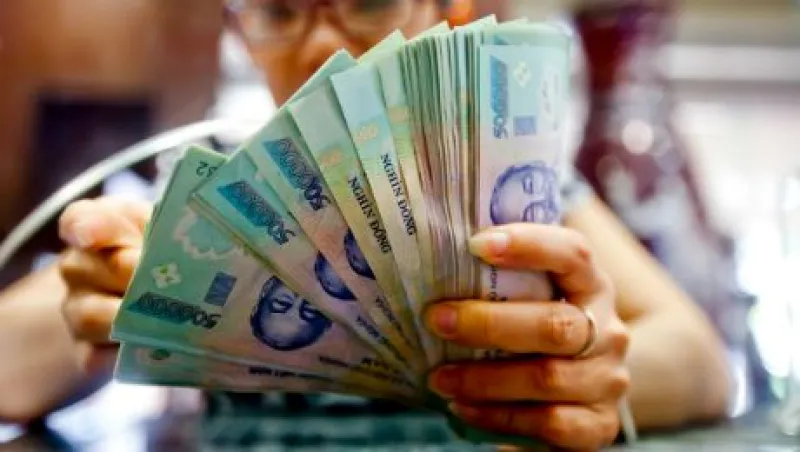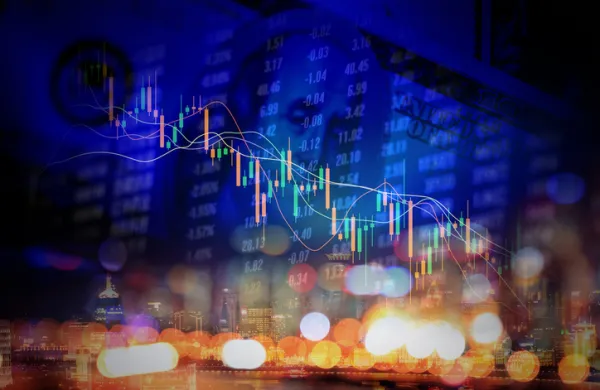The signs of emerging-markets currency volatility are showing up in equities earnings and monetary policy. Today Copenhagen–based Carlsberg, the fourth-largest brewer globally, lowered full-year guidance on rapidly declining sales in Russia as that nation’s economy struggles with combined low oil prices and Western sanctions. The ruble has declined by more than half since sanctions were first imposed. Meanwhile, the State Bank of Vietnam lowered the reference rate for the dong for the third time in 2015 as the reverberations from last week’s surprise devaluation by the People’s Bank of China continues to ripple through emerging Asian economies. Perhaps the most dramatic currency decline has been that of the Thai baht, which hit multiyear lows in the wake of a deadly attack following disappointing economic data. With Federal Open Market Committee minutes scheduled for release this afternoon, many investors are hoping for a hint of dovish concern among Federal Reserve policymakers about emerging-markets gyrations.
Germany votes to push ahead with Greek bailout. After a three-hour debate, Germany’s Bundestag, its lower house of parliament, voted to proceed with the $95 billion bailout of Greece organized by the European Commission. There were 454 votes in favor of releasing the funds, while 113 voted against the proposal and 18 abstained.
Norway’s wealth fund posts loss. The $871 billion Government Pension Fund of Norway, the world’s largest sovereign wealth fund, today reported the first quarterly decline in three years as declining financial markets shaved $73 billion in value from its holdings. Fund CEO Yngve Slyngstad warned in a statement that historically low bond yields will continue to drag on future performance.
Wild swings for Chinese stocks. The Shanghai Composite index fell by more than 5 percent during trading today before finishing the day up 1.24 percent. Multiple media outlets reported that rumors of fresh stimulus measures by the people’s Bank of China may have triggered the recovery as the volatile mainland equity markets remain emotionally driven.
Goldman Sachs unit gets Hong Kong Bank approval. The Hong Kong Monetary Authority today granted a banking license to a division of Goldman Sachs Group, allowing the subsidiary to take deposits greater than HK$500,000 ($64,495.32) and engage in capital markets activities there.
Copper hits multiyear low. Three-month copper contracts on the London Metal Exchange traded below $5,000 per metric ton today for the first time since July 2009. The metal traded lower in line with most commodities, despite a modest rally for crude oil prices.
Portfolio Perspective: Treasury Markets Price in September Hike — Karl Haeling, Landesbank Baden-Württemberg
With the FOMC set to release minutes today, market attention will be drawn again to the timing of a rate hike. The Fed is preparing to raise rates at a time when U.S. money markets are broken. Overnight rates thus may not move up as quickly or as much as many market participants anticipate. This in turn has helped most analysts, in our view, to underestimate the probabilities of higher rates that are priced in to the market.
It appears as if many market participants believe that when the Fed raises its target range for overnight rates to 0.25–0.50 percent from the current 0.0–0.25 percent range, Fed Funds will immediately move up 25 basis points to 0.37–0.38 percent from the 0.12–0.13 percent that generally prevailed in recent months and the 0.15 percent of recent weeks. But with dealer balance sheets for repo intermediation or money market borrowing so low and with the Fed seemingly poised to put the reverse repo rate at 0.25 percent, the very bottom of the new target range when rates are actually hiked, overnight rates may only trade between 0.30 percent and 0.33 percent.
Uncertainty over where overnight rates will actually trade after a rate hike then compound the variability even more. It appears unlikely that Fed funds will trade much above the 8-basis-point-premium to the Fed’s reverse repo facility rate. It could trade at a smaller premium, though, given that the Fed will be attempting to boost rates via broken money-market infrastructures, rather than simply maintaining stability as has been the case in recent years.
It’s uncertain as to where overnight rates will actually trade when liftoff starts. Actual risks suggest that they will be nearer to the lower end of market expectations, particularly in the beginning. This implies a higher chance of a September rate hike already discounted in the market than many analysts are saying. This is significant as the market reaction to a rate hike, when it finally comes, may not be as dramatic as implied by the lower probability estimates.
Karl Haeling is a vice president of capital markets at Landesbank Baden-Württemberg’s New York office.






